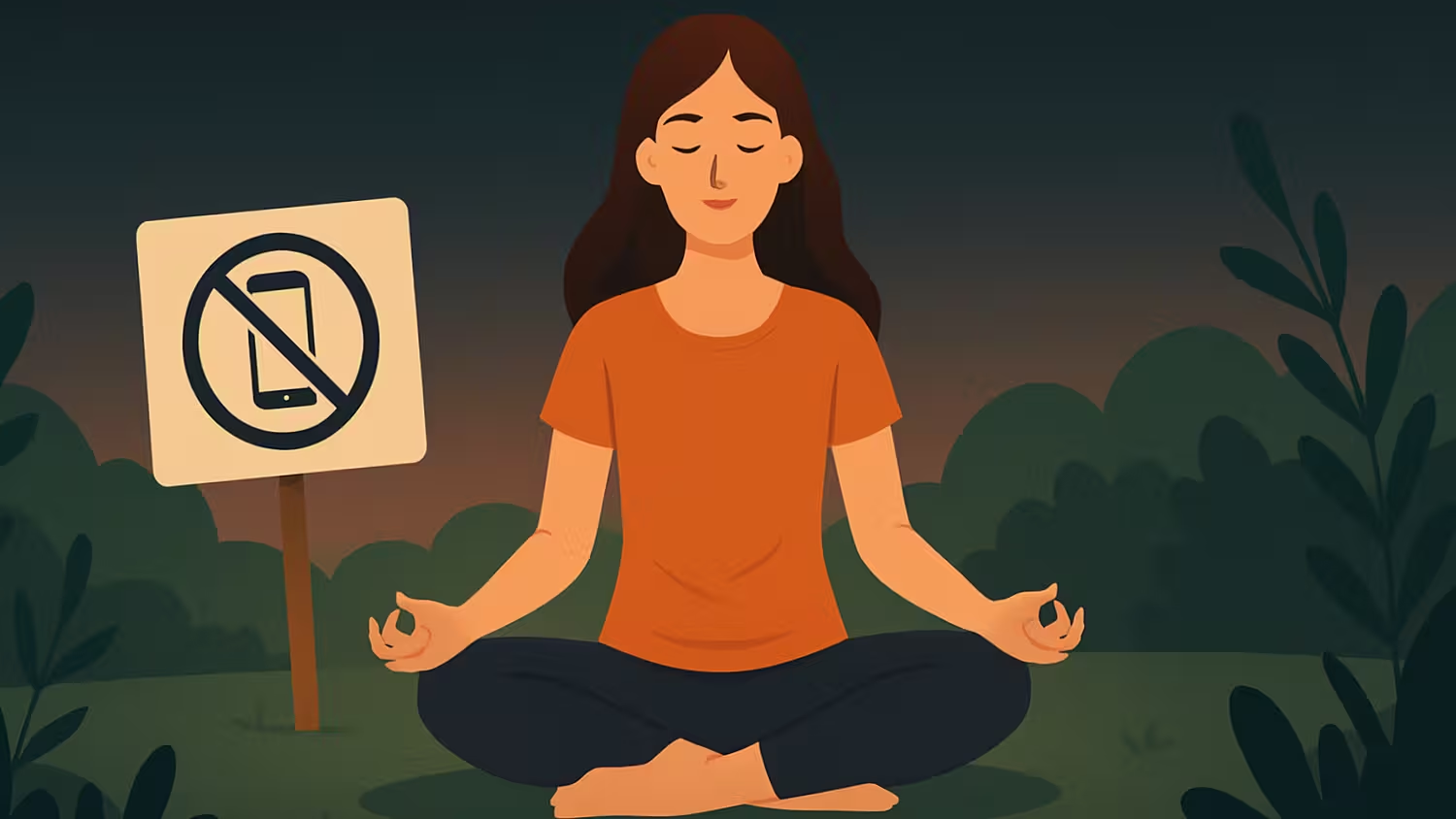Introduction
In a world where screens dominate our lives, from work emails to binge-watching TV shows, it’s easy to feel overwhelmed. Most of us rely heavily on digital devices like smartphones, laptops, tablets, and smartwatches. While technology has enhanced communication, access to knowledge, and convenience, excessive screen time is silently affecting our health and well-being.
If you often feel fatigued, anxious, unfocused, or experience poor sleep, digital overload may be the culprit. That’s why it’s time to hit the reset button with a 7-Day Digital Detox Challenge. This step-by-step plan will help you reclaim control over your screen habits and reconnect with your health and everyday life.
Table of contents
Why Consider a Digital Detox?
1. Eye Health and Vision Relief
Spending hours in front of screens causes digital eye strain. Symptoms include dry eyes, blurred vision, neck and shoulder pain, and headaches. The blue light emitted by screens can also damage the retina and disrupt your natural sleep-wake cycle.
Fix: A digital detox gives your eyes time to recover. Use the 20-20-20 rule: every 20 minutes, look at something 20 feet away for 20 seconds. You can also use blue light filters or glasses designed to reduce eye strain.
2. Improved Mental Clarity and Mood
Constant notifications, endless scrolling, and app-switching disrupt your focus. Social media comparisons can also contribute to anxiety, depression, and reduced self-esteem.
Fix: Disconnecting from screens allows your brain to reset. You’ll experience improved focus, better decision-making, and a more stable mood.
3. Better Sleep Quality
Blue light from phones, tablets, and TVs interferes with melatonin production—the hormone that helps you fall asleep. Late-night screen use delays your natural sleep rhythm, leading to poor rest and fatigue the next day.
Fix: Turning off screens at least an hour before bed allows your body to produce melatonin naturally, helping you fall asleep faster and enjoy deeper, more restful sleep.
4. More Meaningful Relationships
Devices often distract us from in-person interactions. When you’re glued to your phone, you miss out on quality time with family, friends, and even yourself.
Fix: Taking a break from screens helps you be more present, improve conversations, and strengthen your real-life connections.
5. Increased Productivity and Creativity
Multitasking with screens often makes you less efficient. Constant interruptions fragment your attention and reduce the quality of your work.
Fix: Fewer screen distractions lead to improved concentration, faster task completion, and renewed creativity.
Also Read: Sweat ≠ Fat Loss: The Truth About Sweating and Weight
The 7-Day Digital Detox Challenge
This challenge is designed to help you gradually reduce screen time and replace it with healthier habits. Each day builds on the last, so you can make real progress by the end of the week.
Day 1: Know Your Screen Habits
Start by tracking your digital behavior. Use built-in features like Digital Wellbeing (Android) or Screen Time (iPhone). Review how much time you spend on various apps and websites.
Goal: Awareness is key. Understand where your time goes and which apps or platforms consume most of your attention.
Day 2: Create Phone-Free Zones
Designate specific places in your home where screens are off-limits. Ideal locations include your bedroom, bathroom, and dining table. These should be areas for rest, privacy, or meaningful conversation.
Tip: Replace your phone alarm with a traditional alarm clock to avoid starting your day with screen time.
Day 3: Limit App Usage
Choose a few high-use apps and set daily time limits. Most phones allow you to restrict app usage automatically. Limit social media or video apps to 30 minutes or less per day.
Bonus: Disable non-essential notifications or move distracting apps to a different home screen or folder.
Day 4: Replace Screen Time with Offline Activities
Start adding real-world alternatives to fill the digital void. Spend time outdoors, read a physical book, try journaling, cook a new recipe, or do a home workout.
Goal: Rediscover activities you enjoy without screens.
Day 5: 24-Hour Social Media Break
Take a full day off from all social media platforms. Log out or even uninstall the apps temporarily.
Tip: Let your contacts know ahead of time that you’re doing a detox, so they don’t worry if you go silent.
Day 6: Screen-Free Evenings
Turn off all screens after 8 or 9 PM. Use that time to wind down. Meditate, take a bath, enjoy calming music, or talk with your family.
Result: You’ll sleep better and feel mentally refreshed the next day.
Day 7: Total Digital Sabbath
Commit to an entire day without screens. No phones, laptops, tablets, or TVs. Instead, go for a walk in nature, play a board game, declutter your space, or try a new hobby.
Challenge: Can you go 24 hours without any digital input?
Maintaining Digital Wellness After the Challenge
A digital detox is just the beginning. Long-term screen balance requires intentional choices. Here are tips to help you stay digitally healthy:
1. Schedule Weekly Digital Breaks
Choose a day or a few hours each week to go screen-free. Make it a habit.
2. Use Tools for Control
Use screen-limiting apps like Focus Mode, Forest, or Freedom to block distractions during key tasks.
3. Unsubscribe and Unfollow
Clear out your email and social media feeds. Unsubscribe from unnecessary newsletters and unfollow accounts that don’t add value to your life.
4. Embrace Digital Minimalism
Only use apps and platforms that serve a purpose. Declutter your phone, disable notifications, and set clear boundaries around screen use.
5. Prioritize Sleep Hygiene
Make your bedroom a tech-free zone. Stop using screens at least an hour before bed and avoid checking your phone if you wake up at night.
Benefits You’ll Notice After 7 Days
- Sharper focus and improved attention span
- Reduced eye discomfort and fewer headaches
- Better posture and less neck strain
- More restful sleep and higher energy levels
- Lower anxiety and improved mood
- Better time management and stronger relationships
- Increased productivity and a deeper connection with real-life activities
It’s Time to Unplug
The goal of a digital detox isn’t to ditch technology forever. It’s about creating balance and using devices in ways that support your health, goals, and values. In just one week, you can reset your relationship with screens, improve your mental clarity, and rediscover life offline.
Start small. Stay consistent. And most importantly, remember that your well-being matters more than your screen time.
Unplug to reconnect. Your mind and body will thank you.





